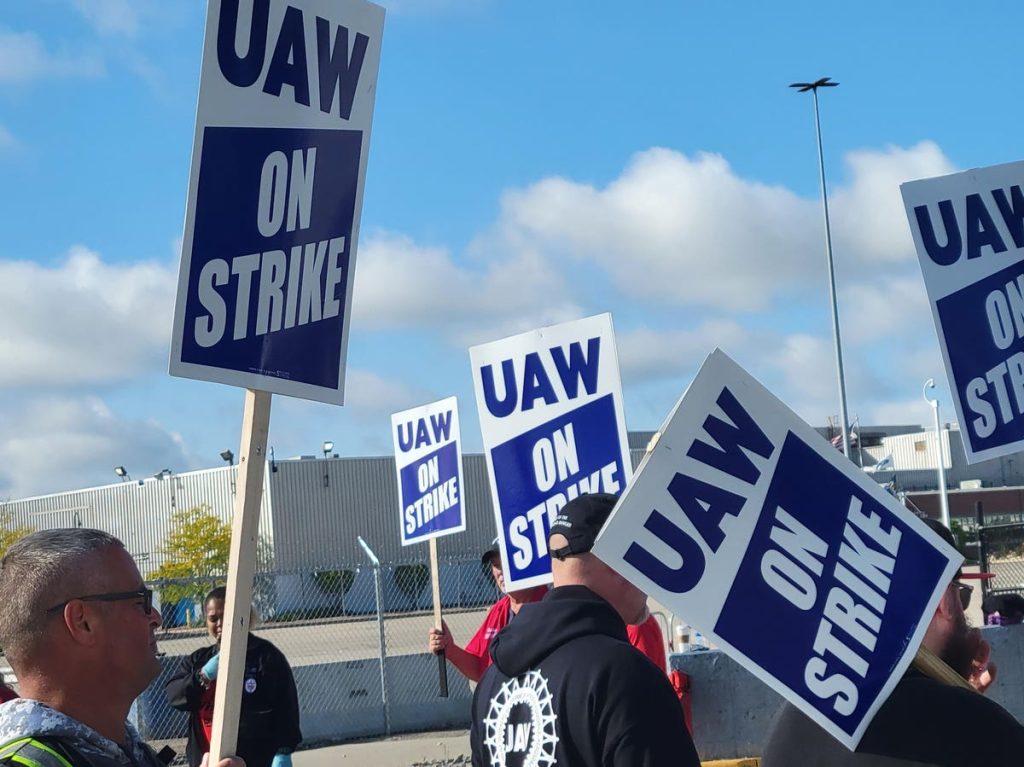Progress at Ford Motor Co., impasses at General Motors Co. and Stellantis. The mixed situations led the president of the UAW to announce a widening of the union’s walkout against the Detroit Three automakers, but only targeting two.
In a 17-minute Facebook Live webcast, UAW president Shawn Fain announced walkouts beginning at noon Friday at all 38 parts-distribution facilities at General Motors and Stellantis across 20 states, across all nine regions of the UAW.
“Both companies are still offering a deficient cost-of-living allowance that is projected to provide zero increases over the next four years,” said Fain. “Both of those companies have rejected all of our job-security proposals. Both GM and Stellantis have rejected our profit-sharing proposals and both companies have rejected our proposals to convert temps.”
The story is different concerning Ford.
Fain said enough gains were made at the bargaining table to spare Ford strikes at any facilities beyond its Michigan Assembly Plant in Wayne.
Specifically, the gains include:
- Employees at Rawsonville Components and Sterling Axle in Michigan will now be on the same wage scale as assembly workers, eliminating an entire wage tier.
- Reinstated cost-of-living allowance that was suspended in 2009.
- The right to strike over plant closures during the life the four-year contract.
- Immediate conversion of all current temporary workers to full time, and all temps will have profit sharing after 90 days service.
There’s more work to be done to reach a tentative agreement with Ford, and Fain believes it’s in sight. He’s not so optimistic regarding GM and Stellantis, warning, “We will shut down parts distribution until those two companies come to their senses and come to the table with a serious offer.”
Each of the three automakers involved has already announced layoffs sparked by the week-old walkout. More are likely to follow.
Shutting down parts and distribution centers can hurt more than targeting assembly plants because the action not only impacts production but the availability of parts at dealerships where service operations can be more profitable than vehicle sales.
The longer the labor talks impasse lasts, the fewer choices consumers will find at dealer lots and the more they’ll pay if they’re able to find something they like.
A six-week work stoppage could result in dealer inventories dropping to 800,000 units, resulting in price increases of 3% to 5% of MSRP, or $1,500 to $2,000 per vehicle, according to research by J.D. Power.
Add that up, and J.D. Power estimates that in total consumers would be spending an “incremental” $2 billion more a month for vehicles.
Those price increases would not be limited to vehicles produced by the Detroit Three automakers.
“All brands and all models will likely experience effects of higher prices if a wide-scale stoppage persists into October,” according to J.D. Power research.
Just a week into the UAW’s partial walkout of one plant at each of the Detroit Three automakers, days supply in two important vehicle segments is already thin at GM and Ford.
GM’s supply of midsize pickup trucks is down to 17 days, likely to drop to just seven if the walkout last two weeks and a single day after six weeks, according to J.D. Power.
Ford’s midsize pickup inventory is even thinner at 10 days right now and projected to last a single day by this time next Friday if the walkouts continue.
In the large SUV segment, GM’s days supply stands at 16 days a week into the strike but projected by J.D. Power to winnow down to seven at the end of two weeks.
As evidence of how strikes by UAW workers affect the supply of vehicles produced at non-union plants, J.D. Power research shows inventories of what it classifies as “other” brands sharply declining as well.
Read the full article here








